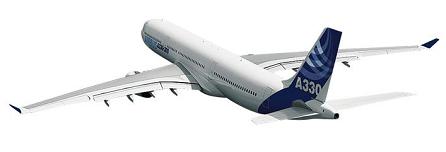Incorrect configuration of flight-control computers, leading to a severe hard landing by an Airbus A330, has prompted a warning to operators to pay greater attention to installation of critical components.
Neither the identity of the carrier involved in the landing, which occurred in September, nor the location has been disclosed. The specific A330 variant is also unclear.
But the aircraft struck the ground hard after its elevators failed to respond to a pitch-up sidestick command from the pilot, who was attempting to flare the aircraft before touchdown. Instead of deflecting upwards, the elevators remained at their neutral position for several seconds.
In a bulletin on the event, the European Aviation Safety Agency says that the subsequent impact was "severe" and required replacement of the A330's main landing-gear.
Investigators discovered that while two primary flight-control computers - of the same standard and part number - were fitted in the first and third computer installation positions, designated FCPC1 and FCPC3, the computer in the second position differed in both respects.
This particular configuration led the second flight-control computer to transmit erroneous signals to the elevator servos, and EASA states that "force-fighting" resulted within the elevator actuation system.
Airbus says that this particular configuration of flight-control computers is "not authorised" by any of its service documents for the type.
 |
|---|
© Airbus |
EASA has warned operators to ensure that parts are mixed only in accordance with established guidelines from the airframer.
"To prevent an uncertified configuration that may result in unexpected operation of the aircraft systemsowners and operators should adhere to the interchangeability and mixability rules given in Airbus type certificate holder documentation," it states.
EASA highlights a similar occurrence, in 2004, during which an Airbus A340's ground spoilers partly extended during power-up, when they normally would have remained fully stowed.
Inquiries discovered that the aircraft's three primary flight computers had been installed in a similar unauthorised mixed configuration.
Source: Air Transport Intelligence news
















